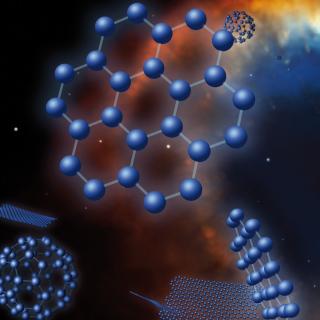Bibcode
Holtzman, J. A.; Shetrone, M.; Johnson, J. A.; Allende Prieto, C.; Anders, Friedrich; Andrews, Brett; Beers, Timothy C.; Bizyaev, Dmitry; Blanton, Michael R.; Bovy, Jo; Carrera, R.; Chojnowski, S. Drew; Cunha, Katia; Eisenstein, Daniel J.; Feuillet, Diane; Frinchaboy, Peter M.; Galbraith-Frew, Jessica; García Pérez, A. E.; García-Hernández, D. A.; Hasselquist, Sten; Hayden, Michael R.; Hearty, Fred R.; Ivans, Inese; Majewski, Steven R.; Martell, Sarah; Meszaros, Szabolcs; Muna, Demitri; Nidever, David; Nguyen, Duy Cuong; O’Connell, Robert W.; Pan, Kaike; Pinsonneault, Marc; Robin, Annie C.; Schiavon, Ricardo P.; Shane, Neville; Sobeck, Jennifer; Smith, Verne V.; Troup, Nicholas; Weinberg, David H.; Wilson, John C.; Wood-Vasey, W. M.; Zamora, O.; Zasowski, Gail
Referencia bibliográfica
The Astronomical Journal, Volume 150, Issue 5, article id. 148, 27 pp. (2015).
Fecha de publicación:
11
2015
Número de citas
394
Número de citas referidas
374
Descripción
The SDSS-III/Apache Point Observatory Galactic Evolution Experiment
(APOGEE) survey operated from 2011–2014 using the APOGEE
spectrograph, which collects high-resolution (R ∼ 22,500), near-IR
(1.51–1.70 μm) spectra with a multiplexing (300 fiber-fed
objects) capability. We describe the survey data products that are
publicly available, which include catalogs with radial velocity, stellar
parameters, and 15 elemental abundances for over 150,000 stars, as well
as the more than 500,000 spectra from which these quantities are
derived. Calibration relations for the stellar parameters
({T}{eff}, {log} g, [M/H], [α/M]) and abundances (C, N,
O, Na, Mg, Al, Si, S, K, Ca, Ti, V, Mn, Fe, Ni) are presented and
discussed. The internal scatter of the abundances within clusters
indicates that abundance precision is generally between 0.05 and 0.09
dex across a broad temperature range; it is smaller for some elemental
abundances within more limited ranges and at high signal-to-noise ratio.
We assess the accuracy of the abundances using comparison of mean
cluster metallicities with literature values, APOGEE observations of the
solar spectrum and of Arcturus, comparison of individual star abundances
with other measurements, and consideration of the locus of derived
parameters and abundances of the entire sample, and find that it is
challenging to determine the absolute abundance scale; external accuracy
may be good to 0.1–0.2 dex. Uncertainties may be larger at cooler
temperatures ({T}{eff} \lt 4000 {{K}}). Access to the
public data release and data products is described, and some guidance
for using the data products is provided.
Proyectos relacionados

Nucleosíntesis y procesos moleculares en los últimos estados de la evolución estelar
Las estrellas de masa baja e intermedia (M < 8 masas solares, Ms) representan la mayoría de estrellas en el Cosmos y terminan sus vidas en la Rama Asintótica de las Gigantes (AGB) - justo antes de formar Nebulosas Planetarias (NPs) - cuando experimentan procesos nucleosintéticos y moleculares complejos. Las estrellas AGB son importantes
Domingo Aníbal
García Hernández

Abundancias Químicas en Estrellas
La espectroscopía de estrellas nos permite determinar las propiedades y composiciones químicas de las mismas. A partir de esta información para estrellas de diferente edad en la Vía Láctea es posible reconstruir la evolución química de la Galaxia, así como el origen de los elementos más pesados que el boro, forjados principalmente en los interiores
Carlos
Allende Prieto